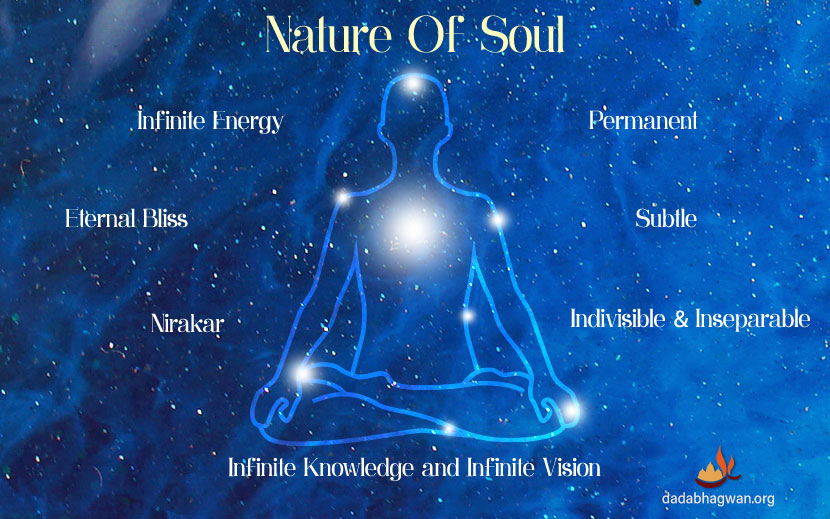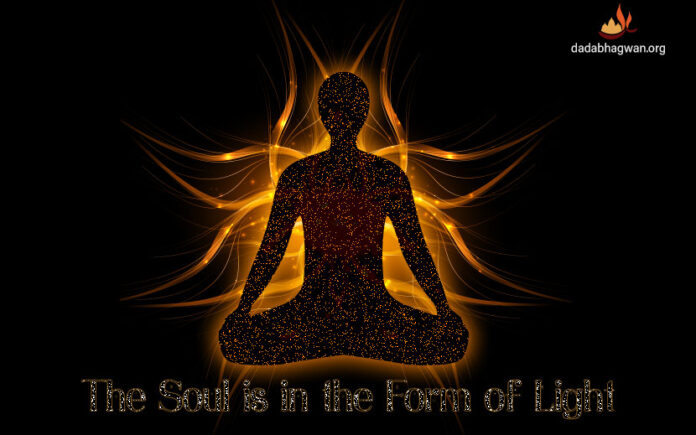A soul is an intangible essence, not visually perceptible. It is the core of one’s being.
When pondering the appearance of a soul, it’s essential to recognize that it transcends physical attributes. Unlike tangible objects, a soul’s essence cannot be captured by the human eye. It is the intangible core that defines an individual’s identity and consciousness.
While artists and philosophers may depict souls in various forms, such as light or energy, the true nature of a soul remains a profound mystery that goes beyond visual representation. Join us as we delve deeper into this enigmatic concept and explore the spiritual and philosophical perspectives on the nature of the soul.

Credit: www.dadabhagwan.org
The Quest For The Soul’s Appearance
Cultural Perspectives On The Soul
Various cultures have diverse interpretations of the soul’s appearance. In some cultures, the soul is depicted as a radiant light, symbolizing purity and divinity. Others believe the soul takes on a human-like form, representing an individual’s essence. These cultural perspectives offer a rich tapestry of beliefs regarding the appearance of the soul.
Philosophical Insights
Philosophers have contemplated the nature of the soul’s appearance for centuries. Some philosophical traditions posit that the soul is formless and transcendent, existing beyond physical attributes. Others suggest that the soul may manifest in the physical realm, taking on a subtle, ethereal form. These philosophical insights provoke profound contemplation on the enigmatic nature of the soul’s appearance.
Ethereal Essence: Beyond Physicality
Attempting to capture the essence of the soul is akin to grasping a fleeting dream.
Within every being resides an ethereal light, a spark that transcends physical boundaries.
Historical Anatomists On The Soul’s Location
Throughout history, the quest to understand the location of the soul has captivated the minds of anatomists, philosophers, and theologians. Ancient theories and debates about the soul’s dwelling place have shaped our understanding of human existence and consciousness.
Ancient Theories
Ancient anatomists and philosophers believed that the soul resided within the physical body, with various theories placing it in different organs. The heart, lungs, and brain were commonly identified as the dwelling place of the soul in different cultures and periods.
The Pineal Gland Debate
One of the most intriguing debates about the soul’s location revolves around the pineal gland. René Descartes, a 17th-century philosopher, proposed that the pineal gland was the seat of the soul and the point of interaction between the material body and the immaterial mind. This theory sparked widespread interest and controversy, influencing the study of consciousness for centuries to come.

Credit: www.crestingthehill.com.au
The Soul’s Composition
The concept of the soul has fascinated humanity for centuries. It is often described as the essence of a person, representing their identity and consciousness. Understanding the composition of the soul is a complex and deeply philosophical endeavor, encompassing religious, spiritual, and metaphysical perspectives. Let’s explore the various dimensions of the soul’s composition.
Religious And Philosophical Views
Religious and philosophical traditions offer diverse perspectives on the nature and composition of the soul. In many belief systems, the soul is considered the immortal and non-material essence of a person. It is often described as the seat of consciousness, encompassing the individual’s emotions, memories, and personality traits.
The Non-material Essence
According to numerous religious and philosophical doctrines, the soul is regarded as a non-material essence that transcends the physical realm. It is believed to exist independently of the body and is often associated with the concept of immortality. This non-material essence is thought to be the source of an individual’s moral and spiritual attributes, reflecting their innermost being and consciousness.
Life After Death: The Soul’s Journey
What happens to the soul after death is a question that has intrigued humanity for centuries. Different cultures and religions have varying beliefs about the soul’s journey after leaving the physical body. In this exploration, we delve into the concept of life after death and the journey of the soul, as seen through the lens of Hinduism and the profound principles of rebirth and karma.
Hinduism And The Afterlife
In Hinduism, the afterlife is intricately tied to the concept of reincarnation. According to Hindu beliefs, the soul is immortal and undergoes a cycle of rebirths, known as samsara. The soul’s journey in the afterlife is determined by its karma, the accumulated sum of one’s actions and intentions in past lives. Positive karma leads the soul to higher realms, while negative karma results in rebirth in lower planes of existence.
Rebirth And Karma
Reincarnation, a fundamental aspect of Hinduism, asserts that the soul transmigrates from one body to another, seeking spiritual evolution through successive rebirths. The concept of karma, the law of cause and effect, dictates the trajectory of the soul’s journey. It is believed that individuals create their destiny through their actions, shaping their future incarnations based on the moral consequences of their deeds.
In Search Of Evidence
Scientific Investigations
Scientists have long been intrigued by the question of what a soul looks like. Through rigorous research and investigation, they have sought to uncover tangible evidence of the soul’s existence. This quest has led to a range of thought-provoking findings and theories that have captivated the scientific community and beyond.
The Soul As Biophysical Reality?
Could the soul be a biophysical reality? This notion has sparked intense debate and exploration within the scientific realm. Researchers have delved into the possibility of the soul having a biophysical presence, seeking to unravel its potential physical manifestations and impact on human existence.
Visual Depictions Of The Soul
Visual Depictions of the Soul have been a subject of fascination and contemplation for centuries. Artists and thinkers have sought to represent the intangible essence of the soul through various mediums.
The Soul As A Form Of Light
Artistically, the soul is often depicted as a form of light, symbolizing purity and transcendence. This representation conveys the idea of inner radiance and spiritual illumination.
Artistic Interpretations
Artists have explored diverse interpretations of the soul, from ethereal figures to abstract shapes. These interpretations aim to capture the essence of the soul beyond physical form, evoking emotions and contemplation.
Personal Beliefs And Descriptions
When it comes to the concept of the soul, personal beliefs and descriptions can vary widely. Each individual may have their own unique perception and understanding of what a soul looks like. In this section, we will explore the diverse beliefs and descriptions of the soul, encompassing various religious perspectives, as well as individual perceptions and experiences.
The Soul In Various Religions
Religions across the world offer diverse perspectives on the nature and appearance of the soul. Here are some descriptions of the soul from different religious traditions:
- Christianity: The soul is often described as the spiritual essence of a person, distinct from the physical body, and is believed to continue to exist after the death of the body.
- Hinduism: In Hinduism, the soul, or “atman,” is considered immortal and is believed to undergo a cycle of birth, death, and rebirth, known as samsara.
- Buddhism: According to Buddhist teachings, the soul is regarded as anatta, or non-self, and the concept of an eternal soul is not emphasized.
- Islam: Islamic beliefs describe the soul as an immortal entity that continues to exist after death, and the state of the soul in the afterlife is determined by one’s actions in the physical world.
Individual Perceptions And Experiences
Beyond religious doctrines, individuals often have their own interpretations and experiences related to the nature of the soul. These personal perceptions can be influenced by spiritual experiences, introspection, and cultural backgrounds. Some people may describe the soul as a radiant light, while others may envision it as a profound sense of inner peace and connectedness.

Credit: lonerwolf.com
Frequently Asked Questions
Where Is The Soul On The Body?
The soul is believed to be located in various parts of the body by ancient anatomists and philosophers, such as the lungs or heart, pineal gland, and generally in the brain. However, there is no concrete evidence or visual representation of what the soul looks like inside the body or after death.
It is considered to be an immaterial essence that encompasses an individual’s personality and consciousness.
What Is A Soul Made Of?
The soul is believed to be a non-material essence of a person, encompassing identity, personality, and memories.
What Happens To The Soul After Death?
After death, the soul in Hinduism goes to Svarga loka or other realms based on karma, then reincarnates.
Is There Evidence Of A Soul?
Evidence of a soul is supported by religious and philosophical beliefs, but scientists have not confirmed its existence definitively.
Conclusion
The concept of what a soul looks like remains a mystery that varies among individuals. Whether it’s a point of light or an essence within, the soul embodies our identity and consciousness beyond physical form. Exploring diverse beliefs sheds light on the enigmatic nature of the soul.


